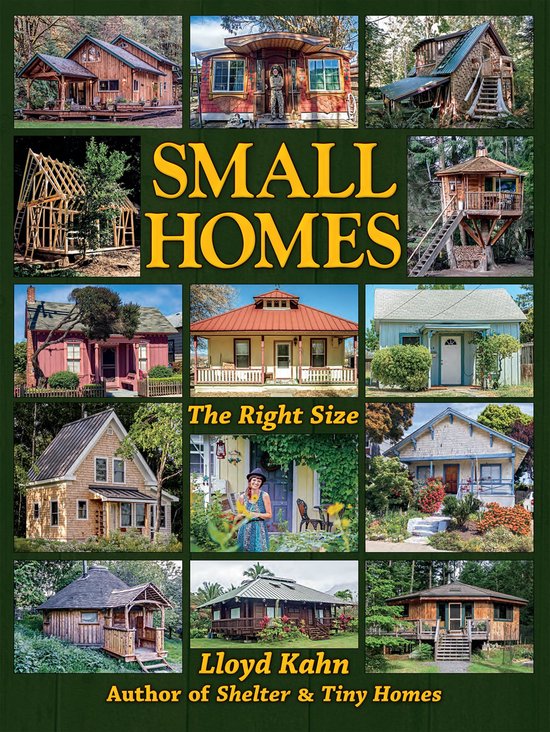
Small Homes
From the publishers of a popular series of building books comes Small Homes, which is highly relevant for these times getting smaller, rather than larger. Some 75 builders share their knowledge of building and design, with artistic, practical, and/or economical homes in the United States, Canada, England, Scotland, France, Germany, Spain, New Zealand, and Lithuania.
- The average American home is 2,500 sq. ft.
- The tiny home averages 200-300 sq. ft.
- The small homes here are 400-1200 sq. ft. the middle ground not too big, not too small (à la Goldilocks).
Compared to the average American home, small homes are less expensive, use less resources, are more efficient to heat and cool, and cheaper to maintain and repair.Compared to tiny homes, they offer a lot more space and breathing room.
They are desirable for people who want to avoid a bank mortgage or high rents, yet need more room than a tiny house affords.Here are 65 small homes.
They vary from unique and artistic to simple and low-cost. Some are plain, ordinary buildings that provide owners shelter at a reasonable cost and some are inspiring examples of design, carpentry, craftsmanship, imagination, creativity, and homemaking.Some are built with "natural materials," such as cob or straw, some with recycled wood or lumber milled on-site, some are old homes that have been remodeled, and many are designed and built from scratch by the owners. Many are in the country, some in small towns, and some in large cities.
Its all in the hands.
The underlying theme with Shelters books, which cover an over-40-year span, is that you can create your own home with your own hands, using mostly natural materials.
And note: A computer cant build your home for you. You still need a hammer (or nail gun), a saw and human hands.
From the publishers of a popular series of building books comes Small Homes, which is highly relevant for these times getting smaller, rather than larger. Some 75 builders share their knowledge of building and design, with artistic, practical, and/or economical homes in the United States, Canada, England, Scotland, France, Germany, Spain, New Zealand, and Lithuania.
- The average American home is 2,500 sq. ft.
- The tiny home averages 200-300 sq. ft.
- The small homes here are 400-1200 sq. ft. the middle ground not too big, not too small (à la Goldilocks).
Compared to the average American home, small homes are less expensive, use less resources, are more efficient to heat and cool, and cheaper to maintain and repair. Compared to tiny homes, they offer a lot more space and breathing room.
They are desirable for people who want to avoid a bank mortgage or high rents, yet need more room than a tiny house affords.Here are 65 small homes.
They vary from unique and artistic to simple and low-cost. Some are plain, ordinary buildings that provide owners shelter at a reasonable cost and some are inspiring examples of design, carpentry, craftsmanship, imagination, creativity, and homemaking.Some are built with "natural materials," such as cob or straw, some with recycled wood or lumber milled on-site, some are old homes that have been remodeled, and many are designed and built from scratch by the owners. Many are in the country, some in small towns, and some in large cities.
Its all in the hands.
The underlying theme with Shelters books, which cover an over-40-year span, is that you can create your own home with your own hands, using mostly natural materials.
And note: A computer cant build your home for you. You still need a hammer (or nail gun), a saw and human hands.
| Auteur | | Lloyd Kahn |
| Taal | | Engels |
| Type | | Paperback |
| Categorie | | Kunst & Fotografie |





